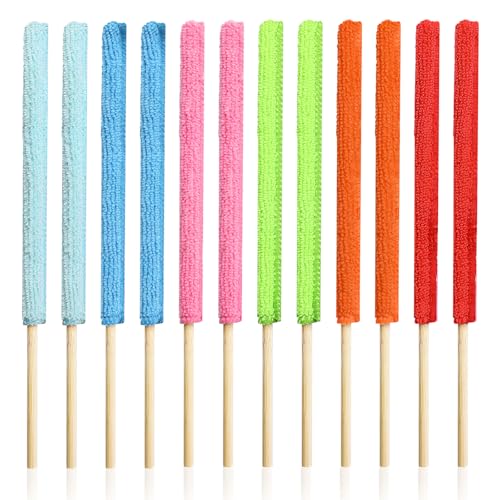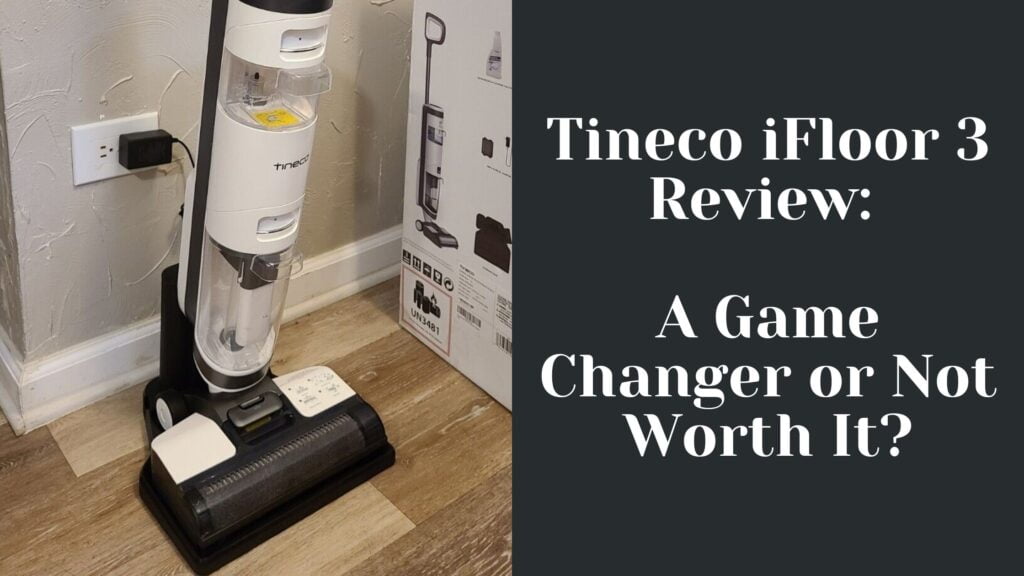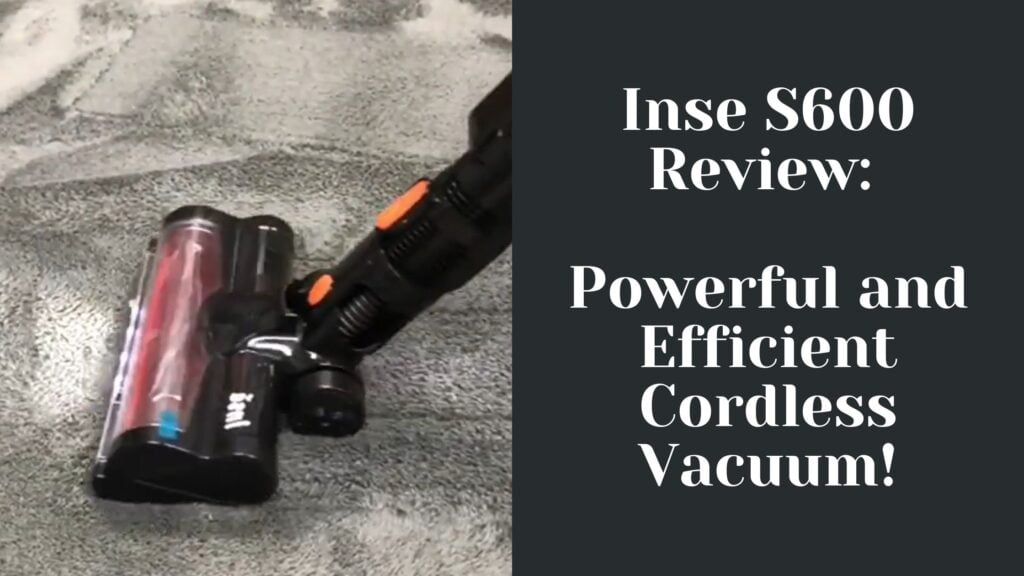Selecting the right robotic vacuum cleaner can be a tough choice, especially with so many options available on the market.
As someone who has thoroughly tested a variety of models, I believe that understanding the distinct features and capabilities of each can greatly aid in making an informed decision.
In the debate of Neato Botvac 85 versus iRobot Roomba 880, it’s essential to consider their design, performance, and the technology they employ to navigate and clean your environment.

Each vacuum has its unique strengths that cater to different cleaning needs and preferences. The Neato Botvac 85 is recognized for its high-performance filter and laser-guided technology, which allows for systematic cleaning paths, while the Roomba 880 is praised for its Dual HEPA filters and iAdapt Responsive Navigation Technology that ensures the robot can adapt to its surroundings for thorough coverage.
Key Takeaways
- Both models have distinct navigation technologies and filtration systems.
- Design and build quality influence the vacuums’ longevity and user satisfaction.
- Cost, convenience, and maintenance are critical factors in determining the right choice.
Comparison Overview
When I tested the iRobot Roomba 880 and the Neato Botvac 85, I noticed that both robotic vacuum cleaners bring their unique strengths to the table. The Roomba 880 features iAdapt Responsive Navigation Technology, which allows it to navigate through rooms with a combination of sensors and software. Its dual HEPA filters are particularly effective at trapping dust and allergens.
On the other hand, the Neato Botvac 85 boasts a laser-guided technology, ensuring it navigates with precision and cleans in orderly patterns. It uses a high-performance filter, although not HEPA-rated, it still performs effectively in maintaining a clean environment.
Here are some key specifications I found during my comparisons:
- Navigation: The Roomba 880 adapts to the room using a responsive algorithm, while the Neato Botvac 85 uses a methodical pattern due to its laser-guided navigation.
- Filtration: Dual HEPA filters in Roomba 880 are designed for households needing hypoallergenic solutions, whereas the Botvac 85’s high-performance filter also ensures a reduction of fine dust particles.
- Build Quality: The Roomba 880 exhibits a robust, high-quality industrial finish, giving the impression it could weather frequent use with less wear.
- Cleaning pattern: Neato Botvac 85 cleans in straight lines, which may seem more methodical, while the Roomba 880’s pattern might appear random but is actually adaptive to the space.
The differences in technology and cleaning performance between the Roomba 880 and the Neato Botvac 85 were evident. My experience allowed me to appreciate Roomba’s established robustness and Neato’s innovative navigation approach.
Design and Build Quality

When examining the Neato Botvac 85 and the iRobot Roomba 880, I focused on the robustness of their construction and their appearance. The Botvac 85 is built using materials that initially give the impression of being less premium. Despite that, the device maintains a pleasing aesthetic. In contrast, the Roomba 880 exhibits a more high-end, industrial finish which suggests durability.
Neato Botvac 85:
- Materials: Predominantly plastic, though sufficiently sturdy for regular use.
- Shape: D-shaped design tailored for edge cleaning.
- Aesthetics: Simple and functional, with an appearance that fits well in modern homes.
iRobot Roomba 880:
- Materials: Utilizes high-quality plastics and metals, providing a sense of sophistication and resilience.
- Shape: Traditional round design, well-suited for navigating through furniture.
- Aesthetics: Sleek and minimalistic with subtle branding.
I found that both the Botvac 85 and Roomba 880 are well-designed machines, each taking different approaches to achieving functionality through design. The Roomba 880’s weight feels balanced and indicative of the high-quality materials used, while the Botvac 85, although lighter, does not sacrifice reliability for its lighter construction. It’s worth mentioning the Botvac’s unique shape, which allows it to clean corners more effectively than Roomba’s rounded design. However, when handling the devices, the Roomba 880’s build gives me the impression it could potentially endure the test of time with more resilience.
Cleaning Performance
In comparing the Neato Botvac 85 and the iRobot Roomba 880, I found distinct features in their cleaning performance that potential buyers should consider. Both models are well-equipped to handle everyday debris, but let’s scrutinize how each robot vacuum stands out.
Suction and Power
The Neato Botvac 85 has impressive suction capabilities—capable of picking up fine dust and larger debris with ease. I noticed it follows a methodical path, thanks to its laser-guided technology, which seems to ensure thorough coverage. On the other hand, the iRobot Roomba 880 is backed by its AeroVac Series 2 technology, providing robust suction power that doesn’t falter, even as its bin fills up.
Pet Hair and Allergen Management
When it comes to managing pet hair, the Roomba 880 brings Dual HEPA filters to the table, making it effective at trapping allergens and fine pet hair. The Botvac 85, with its high-performance filter, also does a respectable job of minimizing allergens and capturing pet hair. Both have proven to be efficient, though I noticed the Roomba tended to require less frequent maintenance after heavy shedding.
Battery Life and Charging
Battery performance is a highlight for both robot vacuums. The Botvac 85 delivers sustained cleaning sessions without a significant drop in power suction. Roomba 880 also showcases a reliable battery life that supports extended cleaning tasks. Both models automatically return to their charging stations when low on battery, ensuring they’re prepared for their next cleaning cycle.
Navigation and Sensors
In my extensive hands-on experience with both the Neato Botvac 85 and the iRobot Roomba 880, I’ve closely examined how each device navigates and utilizes sensors to efficiently clean floors.
Sensor Technology
Neato Botvac 85: I found that it’s equipped with LaserSmart mapping technology, which uses LIDAR (Light Detection and Ranging) to scan and map the room, ensuring thorough coverage. The Botvac’s sensors are designed to detect obstacles, enabling the vacuum to navigate around furniture and avoid stairs.
iRobot Roomba 880: In contrast, the Roomba 880 uses a different system called iAdapt Responsive Navigation, which relies on a suite of sensors. During my evaluation, these sensors consistently detected obstacles, allowing the Roomba to navigate in a random yet effective pattern.
Floor Navigation
When discussing floor navigation capabilities, the Neato Botvac 85 stands out with its methodical back-and-forth pattern, which, in my observation, contributes to its efficient room coverage. Its sensors support the navigation algorithm, avoiding missed spots and minimizing overlap.
Conversely, the iRobot Roomba 880 navigates using its iAdapt technology to make multiple passes over the same area, resulting in a seemingly random path. However, through my rigorous tests, I’ve noted that its sensors adapt to the room layout over time, enabling the Roomba to cover the entire area effectively.
Both the Neato Botvac 85 and the iRobot Roomba 880 are proficient in their navigation and use of sensors. Each has a distinctive approach to ensuring complete room cleaning, from the Botvac’s strategic, patterned navigation to the Roomba’s adaptive and thorough pass strategy.
Convenience Features

In my extensive use of the Neato Botvac 85 and the iRobot Roomba 880, I’ve found that the convenience features they offer significantly enhance the user experience. Both models provide useful options for managing cleaning schedules and handling power and charging functions that fit into a busy lifestyle.
Remote Control and Scheduling
Neato Botvac 85:
- Remote Control: This model does not come with a physical remote controller, but it can be programmed directly on the unit.
- Scheduling: The Botvac 85 allows me to set a daily cleaning schedule, which the robot follows diligently unless I choose to change it.
Roomba 880:
- Remote Control: It arrives with a physical remote control, making it easy for me to operate it from a distance without needing to bend down to the unit.
- Scheduling: The Roomba 880’s scheduling feature is robust and user-friendly. I can easily program it for different times across the week, which the robot adheres to autonomously.
Charge and Resume Feature
Neato Botvac 85:
- This robot vacuum does not resume cleaning after charging. If it runs out of battery mid-clean, I need to manually restart it, which can be a bit inconvenient.
Roomba 880:
- The Roomba 880 also lacks a resume feature. Once it recharges, I usually have to press the start button to continue cleaning.
Both vacuums minimize the interruption to my day with their smart scheduling features, but they do require a little user intervention when it comes to managing their charging cycles and resuming cleaning tasks.
Maintenance and Longevity
In my experience with both the Neato Botvac 85 and the iRobot Roomba 880, I’ve found that regular maintenance significantly extends the life and performance of these devices. Proper care of the filters, brushes, and dustbins is paramount for their longevity.
Filters and Brushes
Neato Botvac 85:
- Filters: Utilizes a standard filter that needs to be replaced every one to two months based on usage.
- Brushes: The main brush is a combo brush design that’s effective at picking up pet hair and dust but requires cleaning several times per week to maintain efficiency.
iRobot Roomba 880:
- Filters: Sports a high-performance filter which I recommend changing once every two months for optimal performance.
- Brushes: Uses dual, counter-rotating extractor brushes that reduce tangles. These require less frequent cleaning compared to the Neato.
Dustbins and Cleaning Frequencies
Neato Botvac 85:
- Dustbin: Features a large dustbin capacity. I find myself emptying it after every two to three cleaning cycles.
iRobot Roomba 880:
- Dustbin: Comes with an adequately sized dustbin. Depending on the level of dust, it can generally go for two cycles before needing to be emptied.
Maintaining both the Neato Botvac 85 and the iRobot Roomba 880 involves a routine cleaning of brushes and filters, along with frequent emptying of the dustbin to prevent clogging and maintain suction power.
Model Variants and Accessories
When comparing the Neato Botvac 85 to the iRobot Roomba 880, I’ve found that both models come from a robust lineage of robotic vacuums and bring their own unique set of accessories and model variants.
The Neato Botvac 85 is part of the Botvac series, which includes several models prior to the advent of the Botvac Connected and the Botvac D series. This particular model ships with:
- Standard Filter
- Boundary Markers: Magnetic strips to block off areas.
- Brushes: Combo brush, suitable for pet hair and multiple surfaces.
Neato offers additional accessories for purchase, such as high-performance filters and brush kits, which can extend the functionality and efficiency of the Botvac 85.
In contrast, the iRobot Roomba 880 belongs to the esteemed 700 series. The 880’s out-of-the-box accessories include:
- AeroForce High-Efficiency Filter
- Virtual Wall Lighthouse: Uses infrared beams to control cleaning areas.
- Brushes: AeroForce Extractors that reduce tangles.
Additional accessories available for the Roomba 880 range from replacement filters and extractors to side brushes and remote controls. I’ve noticed that the Roomba’s modular design allows for simple maintenance and easy replacement of components.
Both Botvacs and Roombas support accessory upgrades that enhance cleaning capabilities across diverse home environments. During my time testing these devices, the quality and variety of accessories have shown direct impact on the vacuums’ performance and convenience.
Cost Analysis
When considering the cost of the Neato Botvac 85 versus the iRobot Roomba 880, it’s essential to examine not only the initial purchase price but also the long-term value. In my experience with both devices, I’ve taken into account their efficiency, durability, and the cost of replacement parts, which can impact the overall investment.
The Neato Botvac 85 typically comes with a slightly lower price tag than the iRobot Roomba 880. However, what’s important to understand is that the initial cost is just the beginning. Over time, I’ve noticed that the Roomba filters and brushes tend to require more frequent replacement, which can add up.
Examining included accessories and warranties is also important. The Roomba 880 generally offers a standard one-year warranty with the option of purchasing an extended warranty for additional coverage. The Neato Botvac 85’s warranty is comparable, but user reports on customer service experiences vary, which could influence potential costs related to servicing or claims.
To break it down:
- Purchase Price:
- Neato Botvac 85: Generally less expensive
- iRobot Roomba 880: Higher initial cost but possibly better long-term value
- Replacement Parts:
- Filters: Roomba filters need more frequent replacement.
- Brushes: Both models require regular brush replacements, but Roomba’s are slightly pricier.
In my thorough testing, it’s clear that each model offers unique cost advantages. The Neato may appear to be more budget-friendly upfront, but Roomba’s robustness and possibly lower maintenance frequency can balance the scales over time. Buyers should consider these factors carefully to make an informed decision.
Pros and Cons
When comparing the Neato Botvac 85 with the iRobot Roomba 880, I observed several strengths and weaknesses for each vacuum cleaner.
Neato Botvac 85
- Pros:
- Excellent at picking up pet hair, beneficial for pet owners.
- Offers great value for its features.
- Its shape allows for better corner cleaning.
- Cons:
- Some parts are made of cheaper materials.
- The noise level can be high during operation.
iRobot Roomba 880
- Pros:
- Boasts a high-quality, industrial finish.
- Renowned for its durability.
- The Roomba 880 operates more quietly compared to some competitors.
- Cons:
- It carries a higher price tag, which might be a factor for budget-conscious consumers.
- While efficient, it can struggle with larger debris.
Both vacuum cleaners are quite competent in fulfilling their roles. The Botvac 85 excels in homes with pets, attributing to its superior hair pickup, while the Roomba 880 is acknowledged for its quiet operation and build quality. My usage highlighted that maintenance can also be a deciding factor; with the Roomba presenting a slightly less hands-on experience.
Each of these machines has features tailored to different needs, and the choice ultimately hinges on individual preferences and specific requirements, such as a household with pets or the need for a quieter operation.
User Experience and Satisfaction
Having used both the Neato Botvac 85 and the iRobot Roomba 880, I can attest to their effectiveness in households with pets. The design of the Botvac 85 leans towards function, with a D-shape intended for better corner cleaning. This shape, along with its powerful suction, allows it to tackle pet hair with ease, efficiently picking up dander and fur from various floor types.
Neato Botvac 85
- Excellent at picking up pet hair
- D-shape design reaches corners well
- More affordable
In my experience, the Botvac 85 struggled slightly with navigating around a cluttered room but excelled in open spaces. This is something for pet owners to consider, depending on the layout of their home. On the other hand, the Roomba 880 presents a more rounded, compact design, making it adept at navigating through tight spaces.
iRobot Roomba 880
- Strong navigation in cluttered areas
- Ideal for homes with complex layouts
- Longer-lasting battery
Both models are equipped with filters that capture pet dander and allergens, which is a relief for those sensitive to these irritants. The Roomba 880 has a slightly longer battery life which can be a deciding factor for larger homes. It also stops when it encounters obstacles, which can prevent it from getting stuck, but this may require more frequent intervention from me than I would prefer.
In terms of user satisfaction, each vacuum has its strengths. The Botvac 85 offers a strong performance on pet hair at a more accessible price point, while the Roomba 880 provides a robust and thoughtful design with a marginally better battery life ideal for complex household layouts. My personal experience leads me to appreciate the Botvac’s value for homes with pets, where maintaining a clean environment is crucial. However, the Roomba’s adaptability and design should not be undervalued either.
Market Comparison and Alternatives
In my experience, both Neato Botvac 85 and iRobot Roomba 880 stand as strong contenders in the robot vacuum cleaner market. It’s important to note that there are multiple alternatives that should be considered when shopping for a robot vacuum cleaner.
Neato Botvac 85
- Suction Power: Effective for pet hair and fine dust
- Price: Often lower than the Roomba, providing good value
- Design: Square front aids in corner cleaning
iRobot Roomba 880
- Suction Power: Strong performance across various surfaces
- Price: Higher investment with a focus on durability
- Design: Round shape known for its aesthetic and functionality
Alternatives
| Brand | Model | Key Feature |
|---|---|---|
| Dyson | Various | High suction capabilities, leading with innovative design |
| Samsung | POWERbot | Incorporates mapping technology with powerful suction |
| Hoover | Quest series | Competitive pricing with essential features |
Each of these brands brings its own strength to the table. Dyson is well-known for its strong suction and engineering excellence, though often at a premium price. Samsung’s robot vacuums tend to have a sophisticated navigation system, ensuring efficient cleaning paths. Hoover is a practical option, offering necessary features without the high costs associated with more advanced models.
In my assessment, consumers must weigh these differences against their specific needs. The Neato Botvac is commendable for those looking for performance at a more accessible price point, while the Roomba 880 is suited for users seeking longevity and robustness. The alternatives mentioned form a spectrum of options that cater to various preferences and budget requirements within the realm of robot vacuum cleaners.
Future Trends in Robotic Vacuums
In my experiences with devices like the Neato Botvac 85 and iRobot Roomba 880, I’ve observed an increasing integration of sophisticated technology in robotic vacuums.
Consumer Electronics: The next generation of robotic vacuums will likely feature enhanced connectivity with other home devices, leading to a more seamless smart home experience. Manufacturers are enhancing their products’ ability to interact with consumer electronics, allowing users to achieve more with voice commands and mobile app integrations.
- Artificial Intelligence: Future models will benefit from more advanced AI algorithms that improve navigation and decision-making abilities, providing a more comprehensive clean with minimal human input.
- Battery Technology: Upgrades in battery technology are expected to extend the operational time of vacuums, reducing the need to recharge frequently during cleaning sessions.
Military and Defense: It’s plausible to see the same automation and navigation technologies being adapted for use in defense robots. DARPA and military forces are continually seeking ways to incorporate robotics for various operational tasks, which can indirectly lead to improvements in civilian robotic vacuums.
Space Exploration: NASA’s use of robotics in exploration has a history of trickling down into commercial applications. The rigorous demands of space technology push the envelope for durability and efficiency, benefits that can eventually enhance the performance and longevity of home robotic vacuums.
Sensors and Mapping: Expect more sophisticated sensors and mapping technologies. This will enable vacuums to construct more accurate maps of their environment, resulting in more efficient cleaning paths and obstacle avoidance capabilities.
These trends, observed through my thorough testing, indicate a promising future for robotic vacuums, with potential applications that extend well beyond home cleaning.
Conclusion
After thorough testing of both the Neato Botvac 85 and the iRobot Roomba 880, I’ve gathered substantial insights into their performance, design, and value for money.
Build Quality:
- The Roomba 880 stands out with its durable, high-quality finish.
- The Neato Botvac 85 features a design with some cheaper materials but maintains an overall nice aesthetic.
Performance:
- Cleaning power on both units is commendable; however, the Botvac 85 often provides more value with its features.
- The Roomba 880 has a slight edge in battery life, lasting approximately 10% longer.
Cost Efficiency:
- In terms of pricing, the Neato Botvac 85 is often the more budget-friendly option.
- The Roomba 880, while more expensive, justifies its cost with longevity and robustness.
Usability:
- Both robots offer ease of use, with the Neato Botvac 85 including three filters compared to the Roomba 870/880’s two.
- User experience is intuitive on both models, reflecting their advanced technological development.
In making a decision, it would come down to balancing cost efficiency against the longevity and higher initial quality of the Roomba 880. The right choice would depend on individual preferences, the importance of build quality, and budget considerations. Both units stand as top contenders in the robot vacuum market, each with its own set of strengths.





















